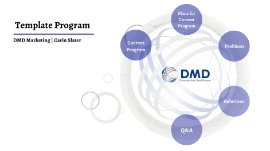Project Status Presentation
Transcript: Importance of Timelines Unveiling Project Timelines Budget Allocation and Management Project timelines serve as roadmaps, outlining key milestones and deadlines vital for project execution. They provide a structured approach to allocate resources efficiently and ensure project progress stays on track. Timelines in project management ensure alignment of project tasks with set objectives and deadlines, facilitating efficient resource allocation and task prioritization. They enable stakeholders to track progress, identify potential delays, and make informed decisions to keep the project on schedule. Cost Control and Monitoring Effective budget allocation ensures resources are optimally distributed across project phases. By implementing a well-defined budget management strategy, organizations can mitigate financial risks and improve project outcomes. Enhancing Project Efficiency through Financial Oversight Overview of Project Timelines Project timelines define the sequence of events, tasks, and deliverables to be accomplished within a specific timeframe. They provide a visual representation of project milestones, helping in effective planning and coordination of project activities. Tracking Project Costs Continuous tracking of project costs allows project managers to monitor expenditures, identify variances, and make necessary adjustments to stay within budget constraints. Utilizing cost tracking tools and methodologies enables better financial control and supports informed decision-making throughout the project lifecycle. Monitoring and Controlling Risks Risk Response Strategies Probability and Impact Analysis Project Status Presentation Continuous monitoring and controlling of risks throughout the project lifecycle is essential to detect new risks, evaluate the effectiveness of risk responses, and update risk management strategies accordingly. Regular risk reviews help in maintaining project resilience and minimizing surprises. Risk response strategies include risk avoidance, risk reduction, risk transfer, and risk acceptance. Project teams choose appropriate strategies based on the nature of risks and project objectives to effectively manage uncertainties. Probability and Impact Analysis is a technique used to assess the likelihood and consequences of identified risks on the project. By quantifying the probability and impact of risks, project managers can prioritize risk response actions effectively. Risk Assessment Tools Achieving Professional Prominence with Ready-made Slides Project Risk Management Common risk assessment tools include SWOT analysis, PESTLE analysis, and risk registers. These tools help project teams evaluate internal and external factors that may impact project objectives and outcomes. Visual Elements in Timeline Charts Effective project risk management involves identifying potential risks and implementing strategies to mitigate them. By proactively addressing risk factors, project teams can enhance project success and minimize disruptions. Timeline charts often include key visual elements such as task bars, milestones, and dependencies, providing a comprehensive overview of project timelines at a glance. Identifying Project Risks The process of identifying project risks involves analyzing potential threats to the project timeline, budget, and quality. Utilizing risk assessment tools and techniques helps in categorizing risks based on their impact and probability. Benefits of Timeline Charts Using timeline charts improves project transparency, helps in identifying critical path activities, and enhances stakeholder understanding of project milestones and deadlines. Gantt Charts vs. PERT Charts Understanding Timeline Charts Timeline charts visually represent project schedules, showcasing key milestones and deadlines in a structured format. Understanding these charts is crucial for tracking progress and managing project timelines effectively. Gantt charts focus on task scheduling and progress tracking, while PERT charts emphasize task dependencies and critical path analysis, offering different perspectives on project timelines. Engaging Stakeholders Involving stakeholders in decision-making processes fosters a sense of ownership and commitment to project outcomes. Effective Team Communication Stakeholder Communication Open and transparent communication channels among team members promote collaboration, resolve conflicts, and ensure alignment towards project goals. Regular check-ins and feedback sessions are key to maintaining a cohesive team dynamic. Effective Communication Strategies Establishing clear channels of communication with stakeholders ensures alignment of project expectations and goals. Team Roles and Responsibilities Transparent and timely communication with stakeholders is critical for project success. Project Team Management Defining clear roles within the project team helps establish accountability and facilitate efficient workflow. Each team member should have a defined

















